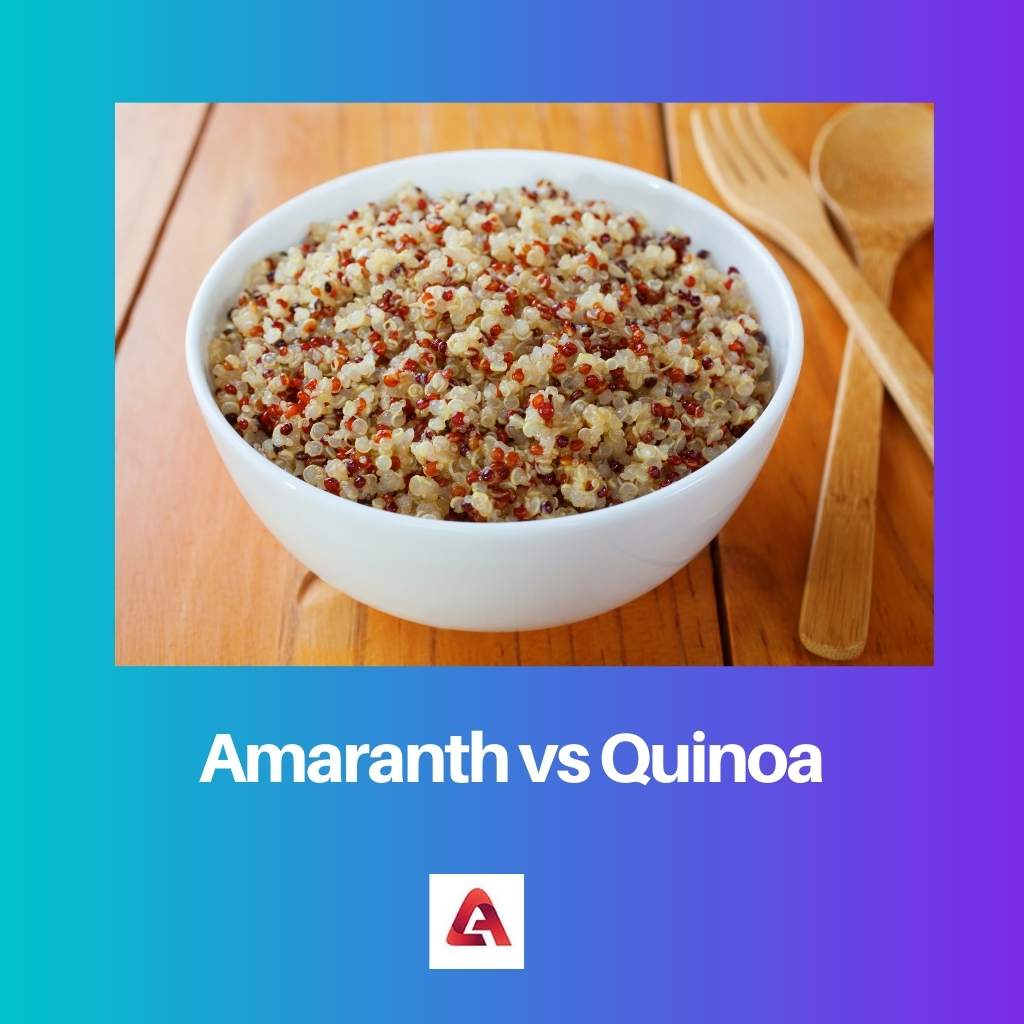Shedding weight without losing nutrients from the human body is always preferred. A healthy diet is considered to be the best and even suggested by physicians.
Key Takeaways
- Amaranth contains more amino acid lysine than quinoa, making it a complete protein source.
- Quinoa outperforms amaranth in fiber content, providing a greater feeling of fullness and promoting healthy digestion.
- Amaranth grows well in various climates, including drought-prone areas, whereas quinoa requires specific conditions, making amaranth more versatile for cultivation.
Amaranth vs Quinoa
Amaranth refers to a plant species belonging to the Amaranthaceae family and has been cultivated for thousands of years. Quinoa (pronounced KEEN-wah) is a gluten-free pseudo-grain that comes from the flowering plant Chenopodium quinoa, which is native to the Andean region of South America.

Amaranth is an impressive health food that is suggested for dieting purposes. It is a grain that is consumed as a staple food in certain parts of the world.
Quinoa, on the other hand, is from the Amaranth family. Ideally, a flowering plant that gives out highly nutritious seeds. The nutritional world considers Quinoa as a whole grain.
Comparison Table
| Parameters of Comparison | Amaranth | Quinoa |
|---|---|---|
| Plantation | Amaranth is planted during June every year. | Quinoa is a planter during April or May every year. |
| Protein Level | Amaranth has high protein levels. | Quinoa has lower protein levels compared to Amaranth. |
| Protection Methods | Amaranth seeds are not coated with any substance, and they can stand in your kitchen for a long time. | Quinoa is affected by insects, so artificially, it is coated with saponin. |
| Iron Level | Iron levels are high. | Iron levels are low |
| Usage | Used in soups and also in casseroles. | Ideally used in salads and fried dishes. |
What is Amaranth?
Amaranth is a very ancient crop that gives out highly nutritious seeds. It is a native of South America and is also consumed as a staple food in many parts of the world.
Amaranth is highly rich in protein, iron, and fibre. It is used in many dishes and, in recent times, considered a healthy diet food item.
There are many benefits of Amaranth.
- Consuming the grain shall reduce cholesterol levels in the body.
- If you are suffering from gluten intolerance or celiac disease, Amaranth is the best medicine to consume
- Amaranth also helps in building muscles. It is essentially due to the presence of amino acids.
The grain is also filled with needed minerals like calcium, magnesium, potassium, and phosphorus. This helps in strengthening the bones.
The more prevalent emotional problem is hypertension. Amaranth is the best solution for the same. The good news is Amaranth has good taste.

What is Quinoa?
Quinoa is a seed extracted from a plant that belongs to the Amaranth family. The seed is considered to be whole grain because of the method of consumption.
Quinoa is a perfectly healthy diet with all the essential amino acids. The size of the grain is slightly larger than the Amaranth.
The benefits of consuming Quinoa are mentioned below
- Alpha-linolenic acid that is present in the seeds helps in maintaining the health of the heart.
- If you are planning to reduce extra weight, this is a good substitute for many food items
- Quinoa helps in reducing sugar levels, too, this is mainly because the grain has a very low glycemic index.
If you are planning to look young, Quinoa is the best edible product the earth can offer you. The antioxidants that are present in the grain fight free radicals aggressively.

Main Differences Between Amaranth and Quinoa
- The protein content is also high in Amaranth, while Quinoa has less amount of protein in it.
- Amaranth and Quinoa help fight diabetes, so Amaranth is used in curries, soups and the like, while Quinoa is predominantly a salad dish while it is also used in fried items.








